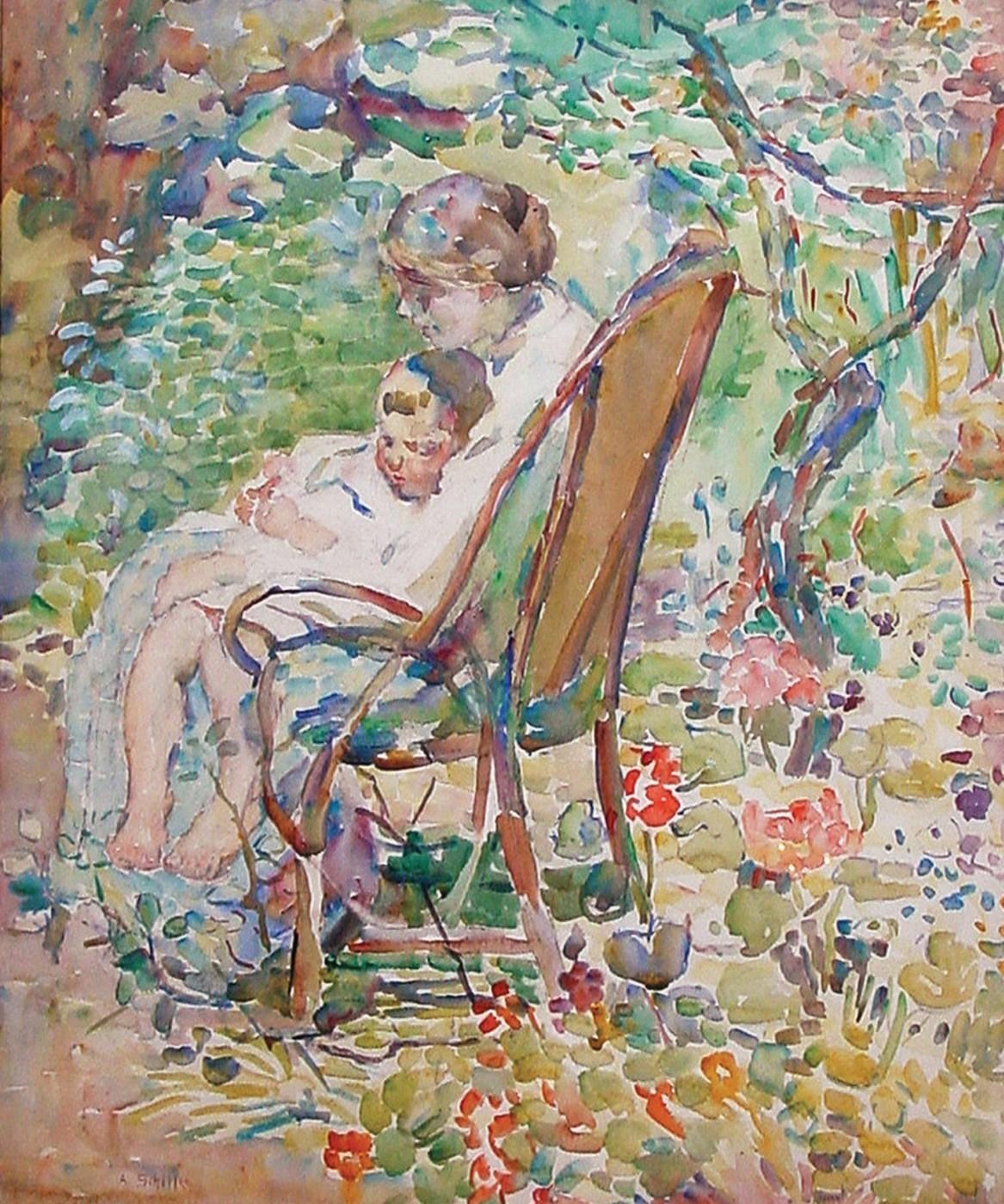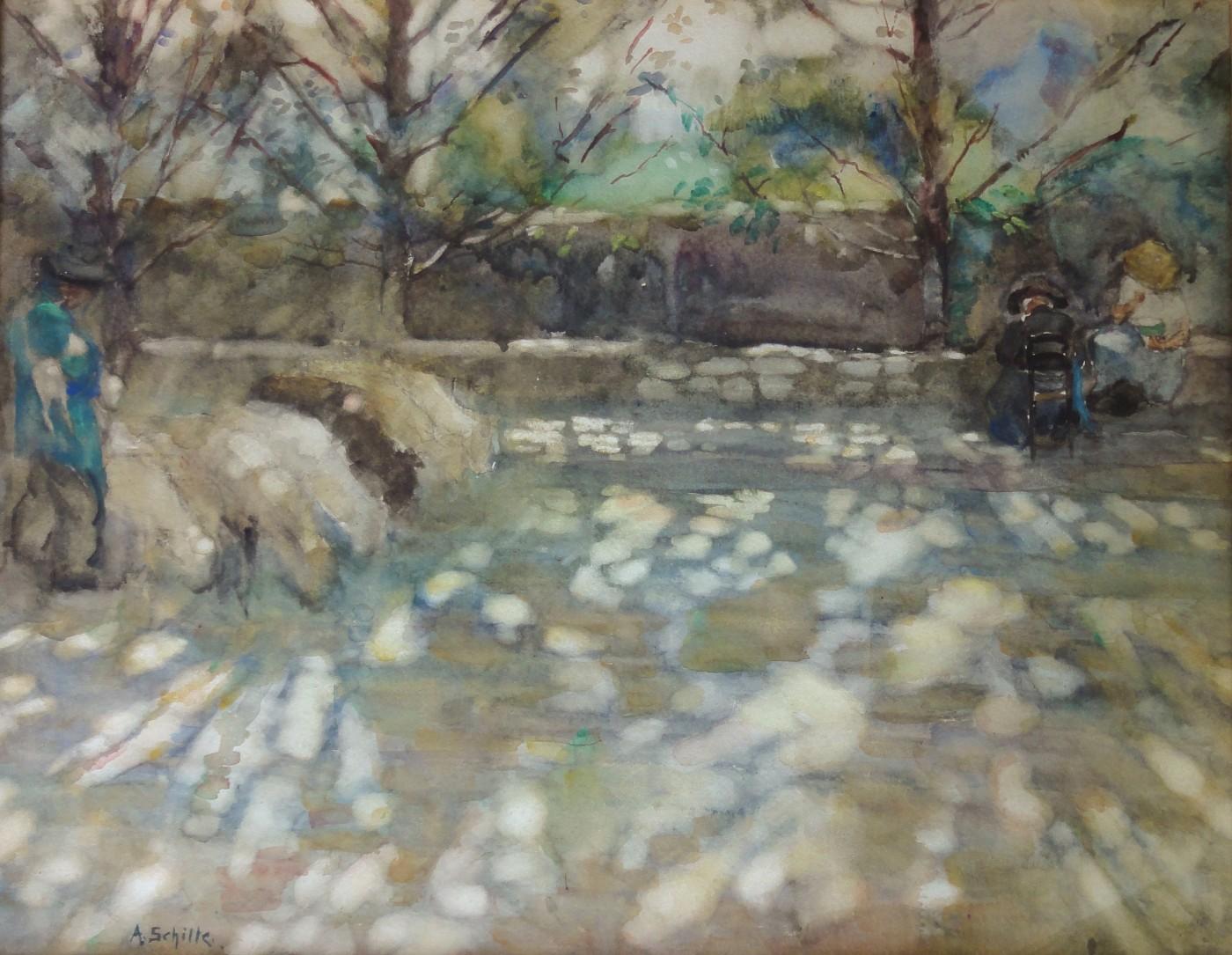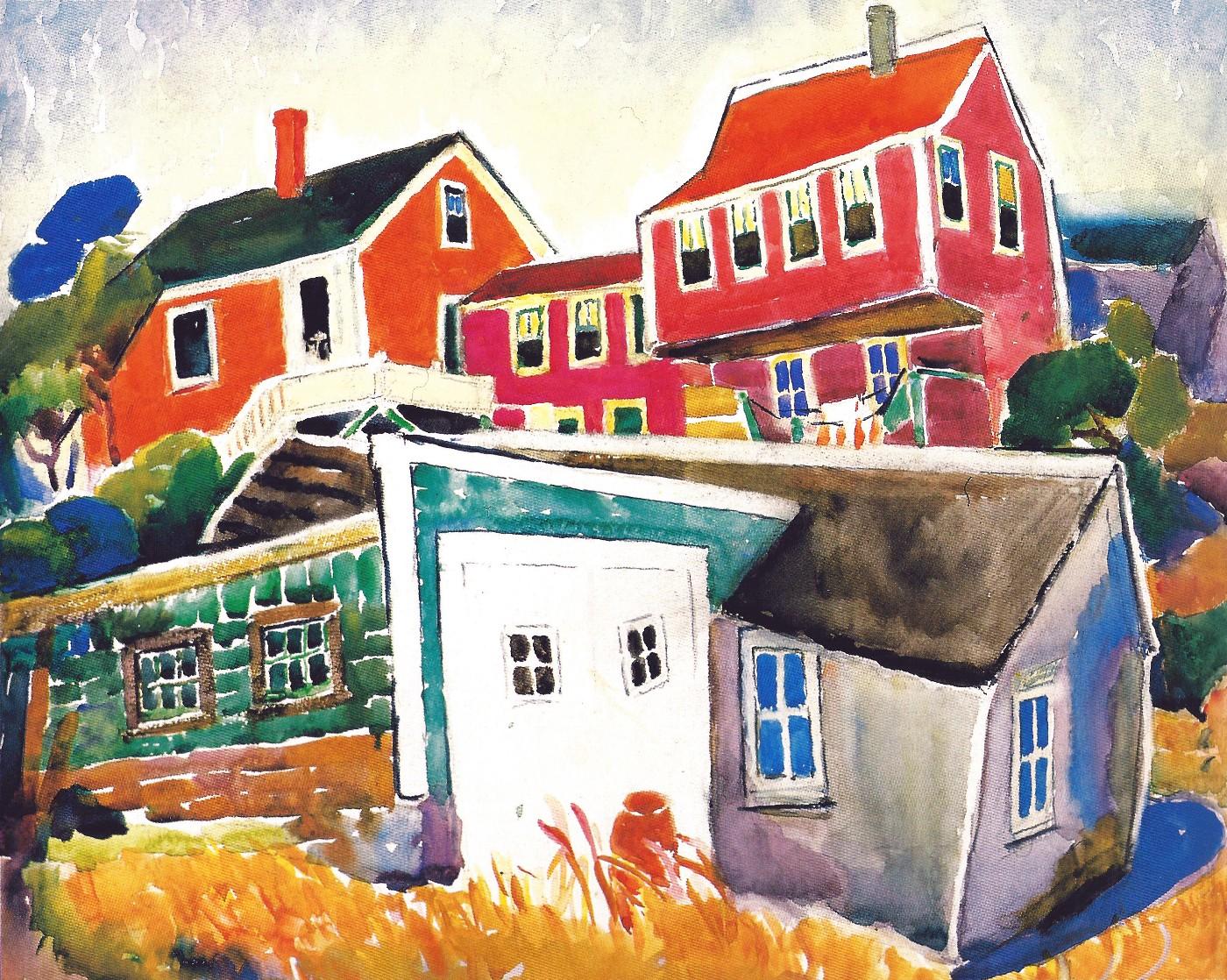One of the most celebrated American watercolorists of the 20th century, Schille was largely forgotten after WWII until recent scholarship revealed her overlooked creative brilliance. She earned acclaim from critics and fellow artists across the United States and Europe at a time when becoming an acknowledged professional artist was a particularly challenging path for women. Her subjects were often beach and harbor scenes, landscapes and city marketplaces, painted in pure-wash watercolor with modern compositions and Fauve color she had observed firsthand in Paris. She was praised for her ability to infuse bold compositions with movement and light.
“Ambition and remarkable skill were required for any artist to succeed on a national scale, but particularly for an unmarried woman from a small city in the Midwest,” said Tara Keny, guest curator of the exhibition and the Modern Women’s Fund curatorial assistant in the Department of Drawings and Prints at The Museum of Modern Art. “Alice Schille’s remarkable aptitude for watercolor, her intellect and her passion for the arts contributed to her lifelong success. She was really a wonderfully curious, talented and tenacious artist.”
Born in Columbus in 1869, Schille completed her studies at the Columbus Art School (now Columbus College of Art & Design), the Art Students League in New York City and the Académie Colarossi in Paris. She exhibited her work across the U.S. while sailing in the summer to France, Egypt, Morocco, Holland, Italy, Dalmatia and England, alone or with fellow artists including Olive Rush and Martha Walter. She forged connections with notable figures of the time including Gertrude Stein, Alice B. Toklas and British painter Dame Laura Knight and was among the first to introduce European modernist styles, such as Cubism, to young artists in the Midwest when she returned to teach each autumn. She also regularly chaperoned art students to exhibitions outside of Columbus, introducing them to well-known artists and curators.



























